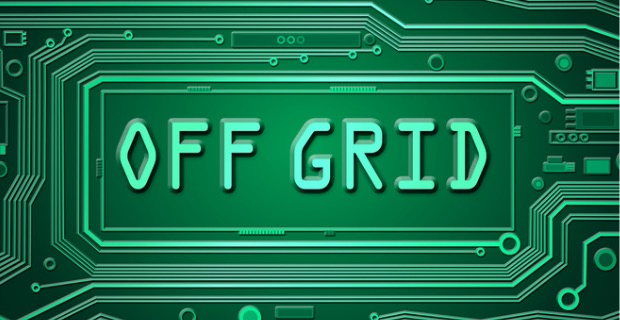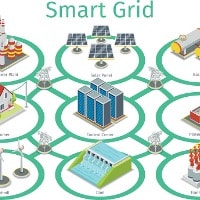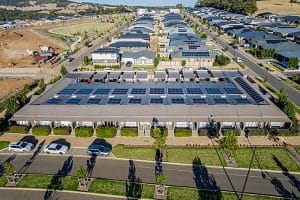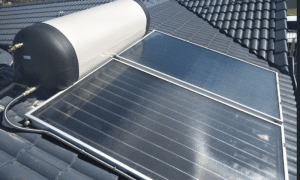With ever increasing prices and the threat of summer blackouts, more and more Australians are looking for alternative ways to get their energy. And many are turning to peer to peer microgrids.
Microgrids help households go off grid and benefit from reduced bills and p2p trading with their neighbours. They are also an advantage if you are in the middle of nowhere.
Australia is a big country and subsequently electricity distribution causes problems. That’s because the distribution networks of poles and wires must stretch for hundreds of kilometres to reach some remote communities. The question is: How do you get electricity efficiently from a city-based generator to a remote town?
The answer is to set up local power generators and build a microgrid. These are small-scale electricity networks that operate independently of the main electricity grid. Microgrids based on renewable energy sources are of particular relevance to Australia due to the wide distribution of communities and industry.

An ISSI Smarter Energy report says microgrids are the building blocks of our energy future. By intelligently networking and managing distributed energy resources and loads, they can achieve efficiency dividends and capture new revenue streams.
This market is forecast to increase to more than $20 billion annually as solar uptake increases. Around half of all Australian homes are expected to have rooftop solar panels installed by 2024.
The Clean Energy Council says microgrids are now being incorporated into the design of new towns and suburbs as a proactive measure.
What’s in it for the Australian consumer?
The ISSI report sets out the way forward for Australian households. For customers, there are a range of reasons that are of interest in a grid-connected microgrid:
- The microgrid architecture may allow a larger amount of distributed generation to be used. Particularly solar PV. This may reduce the operating expenses for communities that are likely to be economically disadvantaged. This fits with sustainability objectives that may be above the mean.
- Battery storage will be more cost effectively used in the microgrid architecture. It will account for the often different occupancy of many dwellings (e.g. holiday accommodation).
-
Remaining grid-connected will allow the community to get the competitive pricing benefits from the National Electricity Market. It will reduce the need to over-capitalise on local energy infrastructure.

City-based microgrid trial in Melbourne
As reported in the Sydney Morning Herald, AusNet Services is carrying out a unique, city-based microgrid trial at Mooroolbark, outside Melbourne.
“For the first time we’re integrating data from traditional grid devices with data from customer assets,” an AusNet spokeswoman said. “It controls power flows on the grid through the use of our distributed energy network optimisation platform.”
Of the 17 trial homes, 14 have rooftop solar panels and batteries. The remaining three have neither. But they are connected to the microgrid via inverter technology. While they can run on the grid, the microgrid can also run as a single unified system, sharing power between the homes.
Trade electricity with your neighbours: Blockchain
The blockchain technology creates a transparent and auditable record of energy generation and consumption, allowing consumers to trade energy with their neighbours automatically.
Blockchain is a cryptocurrency and a digital payment system. When you use Blockchain you move away from away a single entity and allows the entire system to check payments and in this case the trading of energy to help keep the system regulated.
While the idea of a Blockchain is years old but its use to regulate energy in Australia is relatively new. Companies such as AGL and startups such as Power Ledger have invested in the technology. Check out the Energy Matters guide for more information.
Value added solar with p2p trading on Power Ledger
What is p2p trading and how does it work? Simply put, it’s a way of buying and selling electricity from your solar panels with your neighbours.
“Peer-to-peer energy trading presents an opportunity to unlock enormous value for consumers, […] putting consumers in direct contact with other consumers,” Power Ledger managing director David Martin explains.
Power Ledger is currently carrying out Australian trials with Origin, as well as trials in India with Tech Mahindra.
P2p trading is essential for power sharing on microgrids because it directs power flows while keeping a record of transactions.
Microgrids: the future of electricity generation?
According to the ISSI report, microgrids are not only the alternative to distribution over long distances. They are also effective resilient to environmental problems such as bush fires and cyclones.
Microgrids are in their early stages in Australia. But the country is swiftly taking a world-leading position, making the nation a renewable innovation hub. Microgrids get round this issue by creating power and keeping it local. At the same time they lower costs by cutting much of the associated distribution costs.
It looks like it won’t be long before more households go off the grid and reap the advantages of microgrid systems.







































